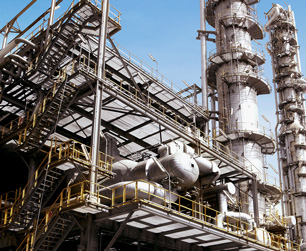Toluene
| EPA Maximum Contaminant Level (MCL) |
1 mg/L |

Toluene (also known as toluol) is an organic chemical used in manufacturing as a solvent for paints, coatings, gums, oils and resins. It's also used as a building block to make benzene, urethane and phenol, and in the blending of gasoline.
Toluene arrives in drinking water primarily through discharge from petroleum factories.
Health Effects of Toluene
Though the World Health Organization reports that evidence is insufficient to link toluene to cancer, toluene is toxic and can have long term health effects. The EPA warns that long term exposure can result in nervous system, kidney and liver problems:
Some people who drink water containing toluene well in excess of the maximum contaminant level (MCL) for many years could experience problems with their nervous system, kidneys or liver.
Water Treatment for Toluene
The EPA recommends granular activated carbon (GAC) combined with packed tower aeration (an air stripping technique) for the treatment of toluene.
Sources: EPA, WHO, Wikipedia, Photo: WikiMedia, author: Secl
Site Index
Filtration Systems
- Aeration for Iron & Sulfide
- Backwashing Filters
(whole house & well units)
- Chlorine & Chemical Injectors
- Countertop Water Filters
- Garden Hose Filters
- Reverse Osmosis, Residential
- Reverse Osmosis, Commercial
- Shower Filters
- Specialty Filters
- Ultraviolet Systems
- Undersink Filters
- Water Softeners
- Whole House Filters
Cartridges
Parts
- Replacement Parts
- Faucets
- Filter Media
- Fittings
- Housings
- O-rings
- Pumps
- Pura UV
- R.O. Parts
- R.O. Tanks
- R.O. Booster Pump
- VIQUA UV